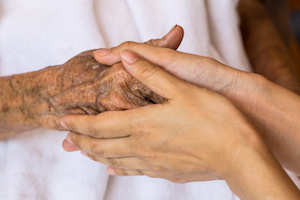Parkinson’s disease tends to be a very frightening disease to be diagnosed with. Knowing what it is and what the symptoms are will help you to catch it in the early stages and begin treatment right away.
What is Parkinson’s Disease?
When brain cells (neurons) deteriorate, Parkinson’s disease is the result. It is considered a chronic condition, as opposed to acute, because it has no cure and doesn’t go away by itself. It is also a degenerative disease, meaning that it breaks down the body of the person it attacks. Muscle control is lost due to a lack of dopamine in the brain and, because of this, a difficulty in walking, coordination, and severe shaking develop.
Characteristics and Signs of Parkinson’s

Some of the signs of Parkinson’s to look out for include:
- Tremors or Trembling: for nearly three quarters of patients diagnosed with Parkinson’s disease, the appearance of tremors or trembling is the first noticeable symptom.
- Muscle stiffness -Parkinson’s patients experiencing stiffness or rigidity may not notice any other symptoms of this characteristic. In fact, the person may not even notice the signs of rigidity unless a physician notes it during a physical examination.
- The presence of physical rigidity, such as decreased arm swing, is especially useful in helping medical personnel establish a diagnosis of Parkinson’s disease.
- This may also include ‘Freezing’ which is the sudden inability to move when you want to , a foot on one side starts to drag, and difficulty walking through doorways and hallways.
- Lacking coordination
- Difficulty maintaining balance
- Difficulty controlling facial muscles – Akinesia and bradykinesia – these characteristics may manifest themselves in the face, for example, as reduced facial expression, infrequent blinking, and slow swallowing resulting in increased saliva secretion, and occasionally, drooling.
- A person with Parkinson’s disease may also notice a change in his or her voice: it may become low and monotone, with little or no inflection. Akinesia and bradykinesia may also appear as trouble executing certain movements, and increased slowness when movements are attempted or executed.
- Talking more quietly
- Raspy voice
- Difficulty with motor skills – The result is lessened in fine motor skills dexterity and may mean the person with Parkinson’s may require help with everyday tasks such as shaving, tying laces, fastening buttons, and handwriting
- Oily skin and dandruff – Seborrheic dermatitis: Parkinson’s patients may notice that they have developed greasier skin, especially around the nose and eyebrows, and a greasier scalp. This symptom is usually accompanied by increased sweating.
- Non-specific sensory symptoms – Unusual sensory feelings such as numbness, pain, burning sensation, restlessness and fatigue can also be indicators of Parkinson’s disease.
- Depression and senility, as well as dementia, are secondary symptoms of Parkinson’s.
- Feeling anxious, angry, discouraged or downright depressed is common as the brain is undergoing a number of chemical changes. Approximately 40-70 percent of Parkinson’s sufferers experience depression at times, while 20 percent of these are considered a major depressive disorder.
- Anxiety or panic attacks are common psychological elements of the disease as well. An average of 70 percent of people who have pre-existing depression also develop anxiety whereas 90 percent who first experience anxiety fall victim to depression.
Dementia is evidenced in 20-30 percent of sufferers and this gradual decline first starts with slowness in thought and advances to a difficulty in properly organizing thoughts.
In most cases, only one side of the body will be affected in the early stages of the disease, and the hands and feet are the most likely area where tremors will first be noticed.
One symptom does not mean that you have Parkinson’s. It usually arrives in the form of a combination of symptoms over a prolonged period.
If you have concerns, consult your doctor.
Article by: Mike Herman









SETH ave - 8 years ago
I was diagnosed with Parkinson’s disease in my mid to late 40’s. I had hand tremors for several years. Gradually becoming worse. I then noticed when I was tired the tremors were worse. I started falling for no apparent reason. I Later had stiffness in my legs and need to walk with 2 canes or a walker. I was very slow getting around. I am now 54 years old. I was forgetful at times and had difficulty expressing myself. I had difficulty swallowing at times. I become tired easily.Now am Parkinson’s disease free,after using the Parkinson’s disease herbal formula i purchased